When and how to harvest beets?
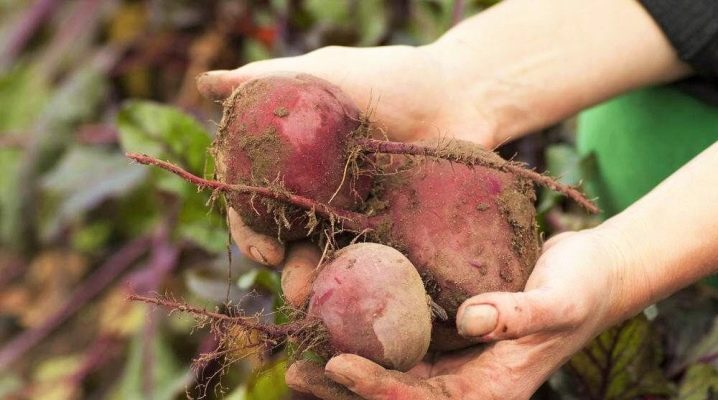
Harvesting in agriculture is the most important operation. The results of labor, the influence of the weather and the choice of planting material become visible. Beet is far from the last place among garden and field crops. The vegetable is rich in vitamins and minerals and has unique taste. Stores well if the conditions are met. In this material, we will consider the methods and timing of harvesting beets, which allow you to preserve the maximum amount of nutrients in this root crop.
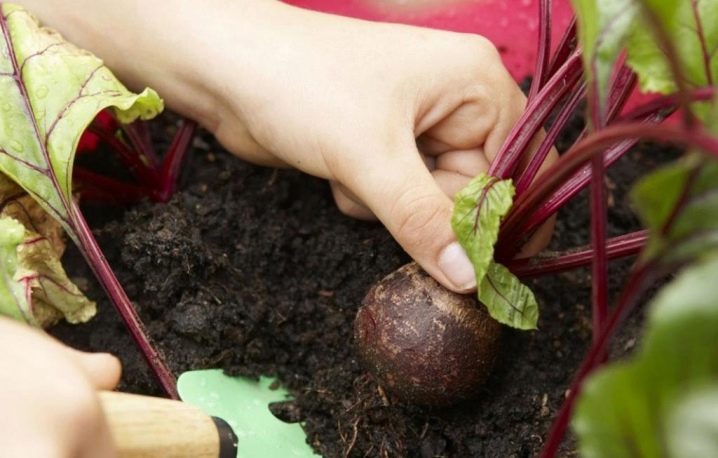
How do you know if the beets are ripe?
The highest concentration of vitamins and sugars in beets is achieved during ripening. Further finding of the root crop in the ground is undesirable. She still will not be able to accumulate even more diverse substances, while significant changes provided for by its nature can occur in the root crop, it will begin to independently prepare for further existence, or rather for reproduction. Actually, for this, the plant needs a supply of sugars and minerals. At the same time, the root crop itself will become hard and practically unsuitable for food.
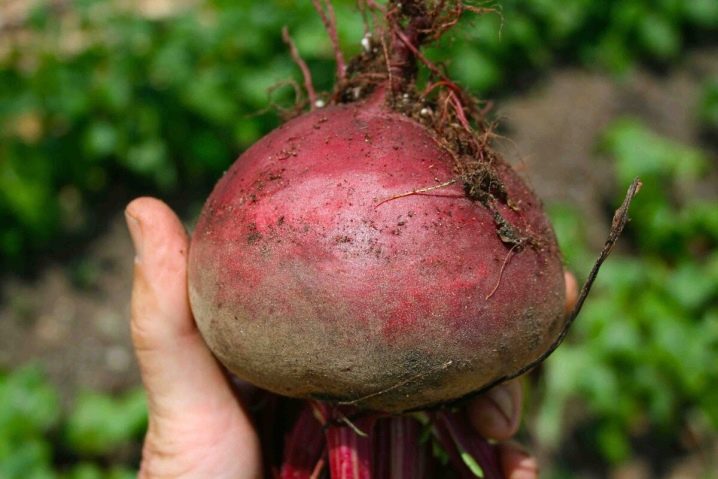
Harvesting unripe beets is also undesirable. These vegetables have not yet collected enough sugars to fully express their taste. In addition, the skin of unripe root crops is still too thin, it will be difficult to maintain such a crop even before winter, since the vegetables will lose the necessary moisture.
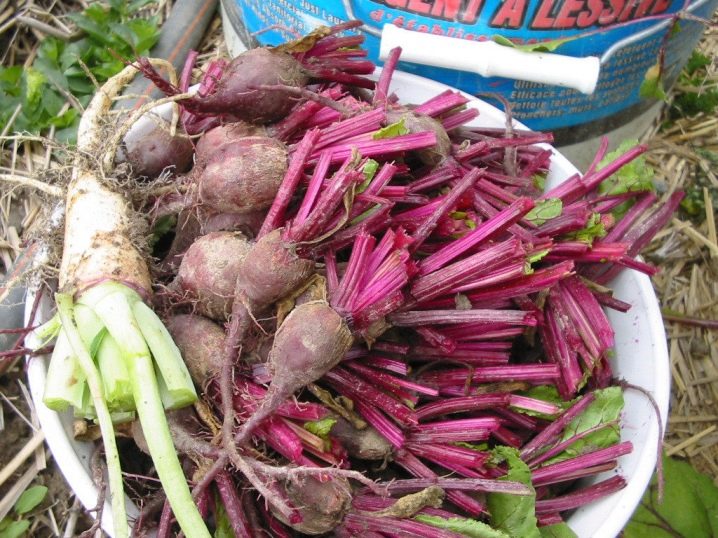
One of the most reliable indicators of optimal harvest time is the drying tops. As a rule, beets, in which the leaves have begun to turn yellow and dry, are ready for harvesting. However, as is often the case in nature, this indicator is not universal. Leaves may turn yellow a little earlier due to weather conditions.
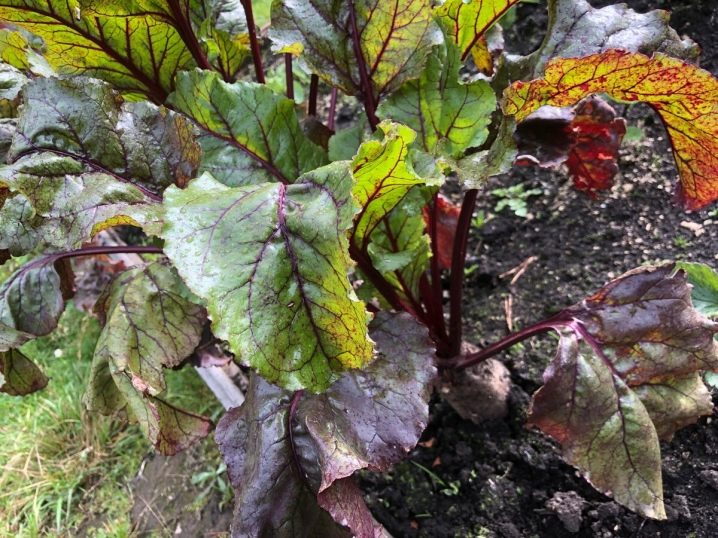
Therefore, for reliability, it is better to dig up one root vegetable and examine it. If the main root has become thin, and the side roots have turned black, it is time to harvest the beets.
Do not forget about the ripening times indicated on the packaging of purchased seeds; it may differ slightly for different varieties. So, early-ripening beets grow from planting 80-110 days, mid-ripening - from 110 to 130 days, late-ripening - more than 130-145 days. Thus, when purchasing planting material, you can find out in advance whether beets in your region will have time to ripen to the state when they are ready for harvesting and storage.
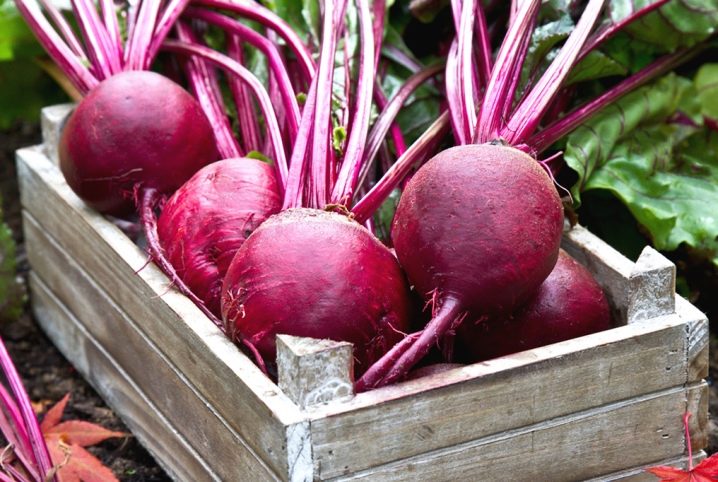
Optimal cleaning times
As already noted, picking unripe beets is undesirable, they are not so tasty and healthy, and they are stored worse. The ripening time, if the variety does not correspond to the region, may not coincide with the growing season typical for this area. However, the painstaking work of breeders has made it possible to create a number of varieties adapted to different growing periods.
So, in the suburbs, and in the Leningrad region, late-ripening varieties can also ripen to condition, one of the most common representatives of which is the Komandor variety. Almost everywhere in central Russia, mid-season varieties of root crops ripen perfectly, among which the most popular variety is "Cylinder".
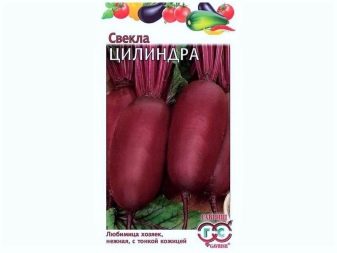
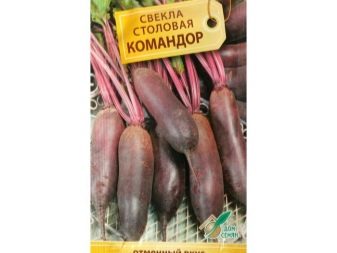
In the Urals, red beets of medium ripeness are mainly grown, for example, "Bordeaux". In Siberia, in some regions, mid-ripening table beets can also ripen, but nevertheless, due to early frosts, early-ripening varieties can give better results.
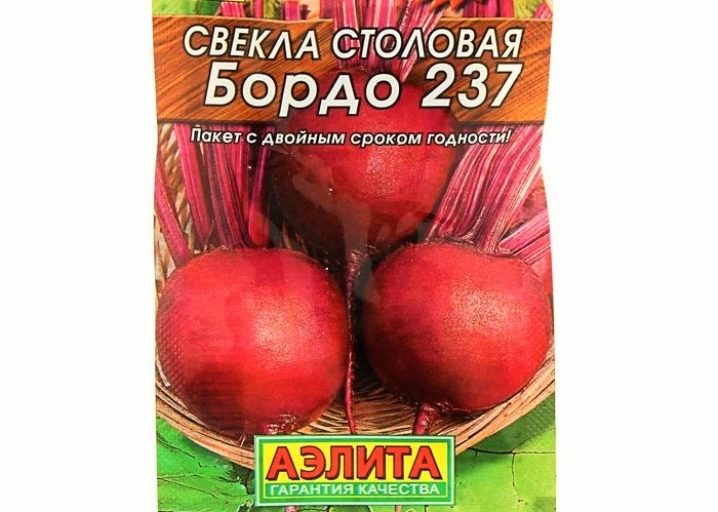
In the southern regions of the country, during the growing season, late-ripening varieties have time to ripen, and in the middle-ripening it is possible to collect two crops each.
Another criterion may be the size of the root crop. If it has reached the declared size for a given variety, it is usually undesirable to stay in the soil further. He will no longer be, but only overripe and lose all his qualities.
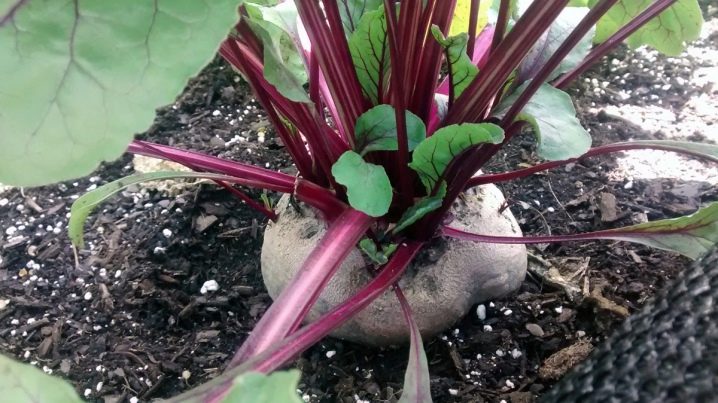
It is also recommended to start harvesting when growths appear on the surface of the root crops - a sign of sugar deposition, indicating that the accumulation is complete.
When the estimated harvest time is approaching, one or two root crops should be dug up and carefully examined, not only externally, but also by taste.
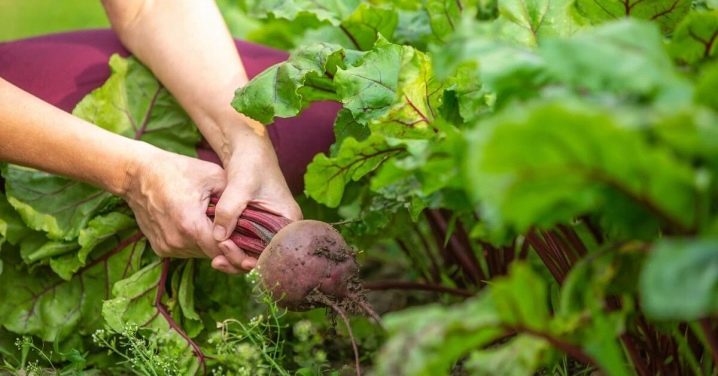
Thus, we can list several main criteria characterizing the readiness of the beet crop for harvesting and storage:
- the state of the tops;
- condition of the roots;
- the optimal size of the root crop;
- the appearance of growths on the root crop.
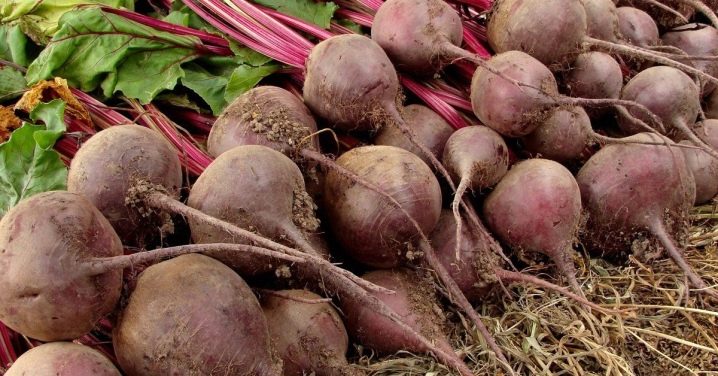
For early varieties
The so-called early or early maturing varieties are distinguished by the shortest ripening period. In some regions, where planting is possible in May, you can start harvesting as early as July. These varieties are also suitable for regions with a short growing season, for example, for the northern part of European Russia or for Siberia. As a rule, such beets must be harvested in August. One of the common varieties of this group is "Boyarynya".
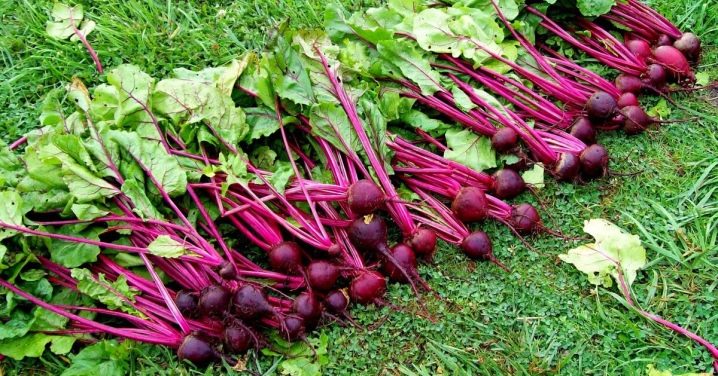
For winter storage
To keep the beets better, you need to try to fulfill a number of conditions. As already noted, the crop must be removed from the garden at the optimal time, to determine which the ripening time should be counted from the planting time in accordance with the beet variety - this is how you can determine the month of the upcoming harvest.
If the approximate ripening dates are known, it is necessary to adjust the harvesting time according to the condition of the root crop and tops. Having decided on the approximate time, it is necessary to stop watering the beds and wait at least two weeks until the soil is completely dry. It is good if there is no rain during this time, since damp root crops can pick up excess moisture in the fall and will be stored worse.
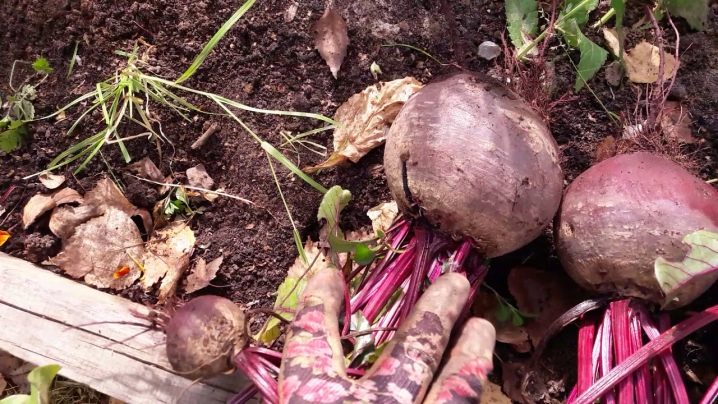
If the weather conditions are unfavorable, at the end of the ripening period, the beets will have to be harvested one way or another, since the roots may outgrow and cannot be used for food.
Do not allow exposure to frost on the crop. If a message appears in the forecast about a possible drop in temperature below 0 °, you will have to forget about the optimal harvesting time, you cannot store frozen beets, they will not be stored.
Of course, late varieties are distinguished by the best taste and the longest shelf life due to the long period of growth, but their cultivation is possible only in the southern regions of the country.
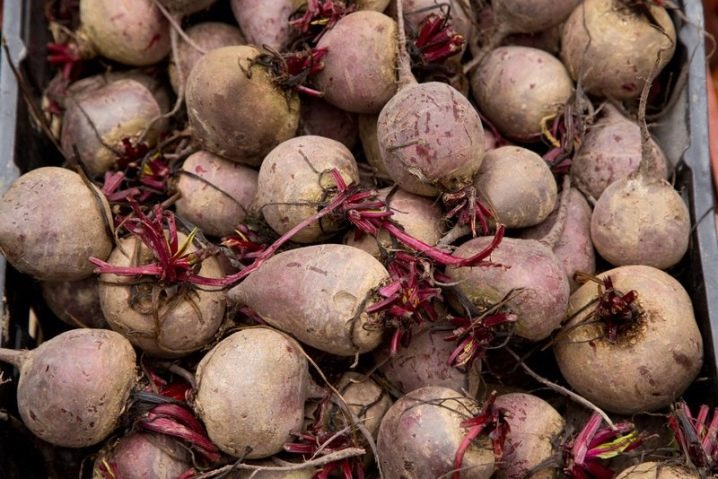
How to dig it right?
If all signs of ripening are revealed, the beets must be harvested. As already noted, for this it is recommended to wait for the soil to dry out, stop watering and check the weather forecast. It is advisable that moisture does not flow for at least two weeks, this will make the soil more crumbly, which will allow you to remove the beets from the garden with practically no clods of earth. Residual soil on fruits can seriously shorten shelf life by absorbing moisture and soaking in the cellar in winter.
The technology for digging up ripe beets is simple. With a shovel or pitchfork, you need to dig in the roots, and then pull them out of the ground, grabbing the tops. In this case, one should act very carefully, any damage can cause rotting of the root crop and infection of healthy specimens stored nearby.
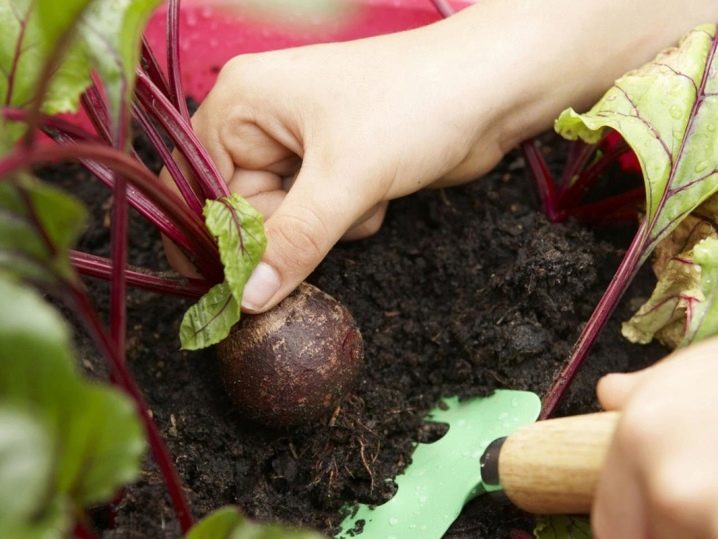
Having pulled the beets out of the ground, it is unacceptable to knock the root crops against each other, this often leads to damage to the skin and subsequent decay.
After the beets are taken out of the ground, you need to let them dry out a little right in the garden, unless of course rain is expected, after which you can start trimming the tops. This is done with a sharp knife, pruning shears, or large scissors. It is not recommended to cut the leaves at the root, it is better to leave the hemp from the tops about 1 centimeter long. With the help of a rag or wearing a glove, remove the dried roots along with the earth adhering to them directly with your hand. The dried tip of the main root also needs to be trimmed off.
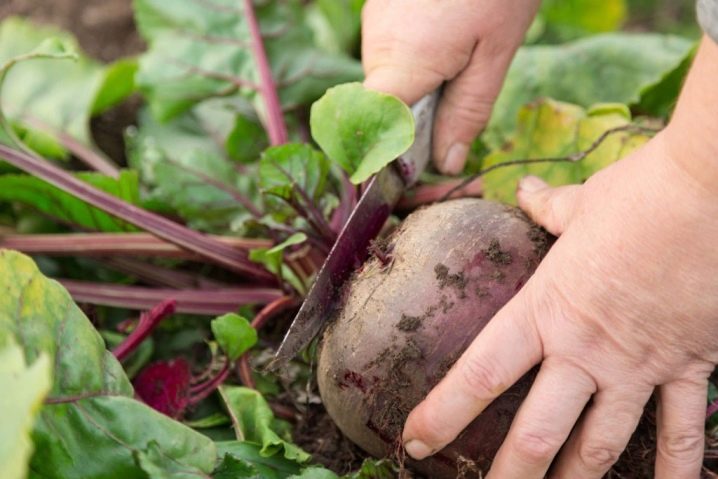
You can collect beets from the garden in one and a half to two hours, depending on the conditions. However, this is not the last operation before storage. It will not be superfluous to dry it in a well-ventilated room without direct sunlight, under a shed or in a shed for about a week or even two, if the weather permits.
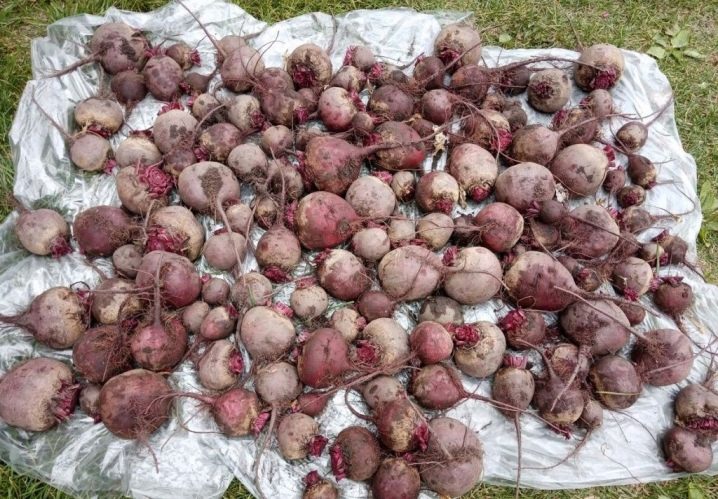
Harvest storage tips
It is advisable to store the beet crop in a closed cellar. With the correct arrangement, the harvested crop has every chance of being usable until spring and even until the next harvest. Before storing vegetables, the cellar must be thoroughly cleaned and dried. If necessary, the room must be treated in advance from pests and rodents.
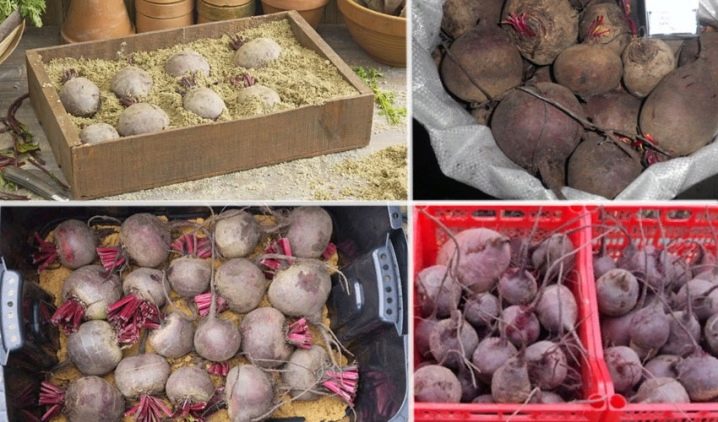
When storing a crop, you should make sure that the vegetables are ready for this. The peel, roots and hemp of the tops should dry out. Before laying the root crops, it is not superfluous to carefully inspect again and set aside all suspicious specimens for disposal or early consumption.
There are several ways to store beets:
- in plastic bags;
- in plastic boxes;
- in a specially arranged compartment in bulk or in "sugar" bags;
- a herd on top of a herd of potatoes.
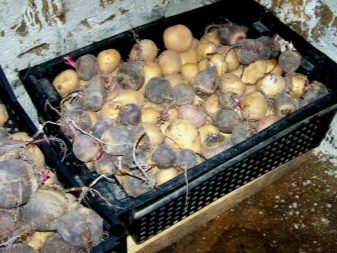
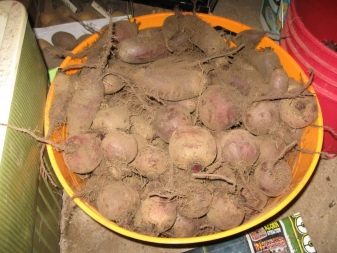
Each method has its own supporters. In any case, you must try to isolate the roots from direct contact with each other. To do this, it is recommended to sprinkle vegetables with dry sand, ash, sawdust or even salt. All of these materials not only perfectly isolate individual root crops, but can also absorb excess moisture.
However, unlike, for example, potatoes, beets can very quickly lose their taste and presentation if the cellar is too dry. The structure of the root crop is such that it requires relatively high air humidity. That is why storing beets on top of potatoes is considered the most preferable today.
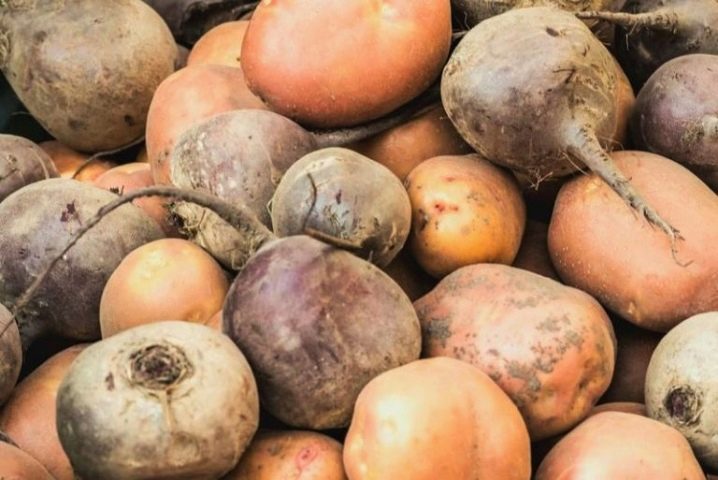
Potatoes actively "breathe" evaporating moisture, and beets actively absorb it, which has a positive effect on the results of storing the harvest of both crops.
Root crops of late-ripening varieties have the longest shelf life, however, as already noted, it is possible to bring their harvest to readiness for storage only in the southernmost regions of the country. The laying of unripe root crops for the winter is undesirable, their thin skin will not be able to ensure dryness of the surface, which will lead to abundant soaking and the development of microflora that provokes rotting.
It is very difficult to preserve early-maturing varieties until spring, since, due to early harvesting, the storage periods will have to be increased by one and a half to two months. Besides, it is necessary to take into account the relatively smaller size of the fruit and the properties of the skin of early ripening beets. It is usually thinner than mid to late ripening.
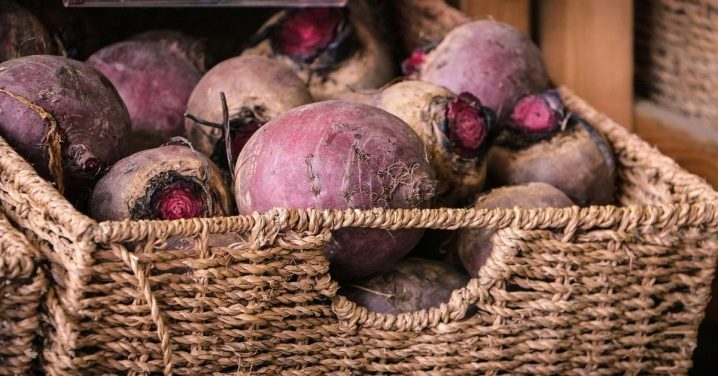
In a city apartment, when there is no full-fledged cellar, it is also not easy to provide an equally long-term storage of the crop without losing its presentation and taste. However, in this case, it is possible to preserve part of the harvest quite successfully for some time. For storage in the vegetable compartment of the refrigerator, beets are best placed in plastic bags. It must be remembered that storing root crops in this way for more than a month is unlikely to work.
For some time, the crop can be stored on an insulated balcony or loggia in boxes, sprinkled with ash, sawdust or sand. It is clear that where the frosts are strong enough, this method is completely ineffective.

Even short-term freezing of beets can destroy the crop, all at once or gradually with rotting of thawing root crops and contamination of neighboring crops from them.
The problem of isolating root crops from each other is perfectly solved by one of the folk storage methods.Beets are dipped in a clay solution. It is not difficult to prepare it. To do this, the clay is diluted with water and stirred until the consistency of thick sour cream is obtained. Potassium permanganate can be added to the solution. When the mass becomes homogeneous, the roots prepared for storage are dipped into it, holding them by the "tail" of the root or hemp from the tops. Then they are laid out on a prepared clean dry surface to dry.
When cracks appear on the formed clay crust, the beets are ready for laying. The beets prepared in this way can be stored in plastic or wooden boxes in rows, sprinkled with ash or sawdust. If necessary, beets are taken for consumption, without beating off the clay.
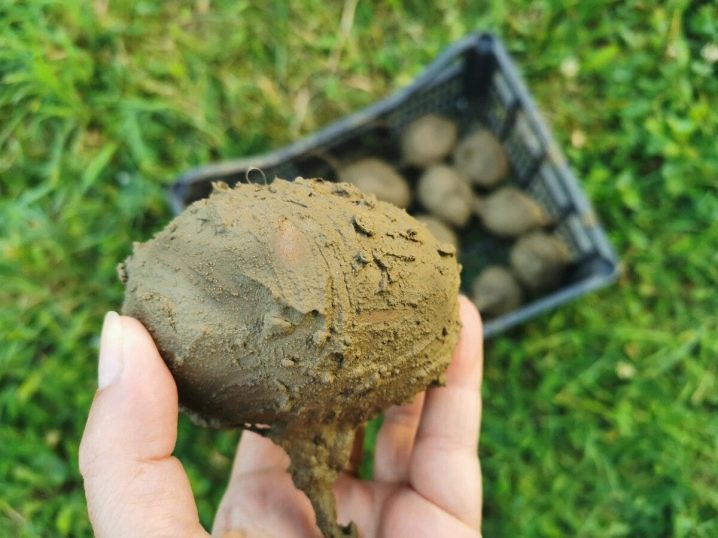











The comment was sent successfully.